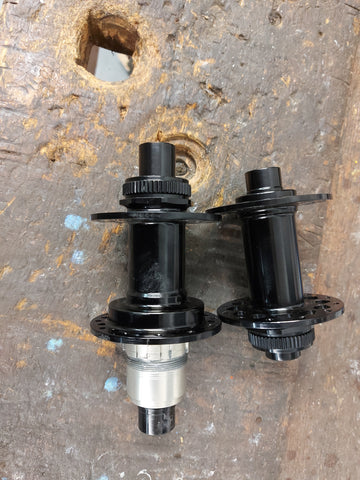Rims are getting wider. Thats a good thing to a point. There are some aero wheels on the market now that have got too wide in our view. 21mm or wider internal widths are marketed for 25mm or wider tyres. Cannondale fit a 23mm vittoria tyre to 32mm wide Knot64 wheels. Brontrager suggest road tyres can be used on there 25mm internal width rims and trek fit a 32mm tyre to these wheels for there bikes.
So let pick this apart by starting with the basics. A wheel is nothing without a tyre and a tyre is useless without a wheel. A wheel should be designed to get the most out the tyres they are intended for. That means standards and sticking to them. ETRTO set these standards and they are not just about safety.
Whats the perfect tyre shape? Well circular just like a tubular. Thats why tubs handle so well. 
Clinchers or tubeless clinchers will deviate from that perfect shape. How much will determine how much the handling is affected. If the rim is to narrow and tyre too wide the tyre can light bulb and give vauge handling in the bends.
If the rim is too wide for the tyre the tyre ends up shorter and wider but the crown is flatter and the sidewalls straighter. In the case of knot64 wheels, the tyres Cannondale supply are stretched so much the sidewall curves inward from the bead.
A tyre thats stretched will not handle as well as if it wear mounted to a rim of the ideal width. That is the
Now such combinations of a over wide rim and narrower than ideal tyre is often paired to lower aerodynamic drag. This however one aspect of the wheel, tyre system.
The move to wider tyres does make some sense. On perfect road surfaces they should show higher rolling resistance but roads are not perfect are they.
Wider rims mean less sidewall flex which in turn lowers rolling resistance and less sidewall flex can improve tyre handling. There are limits though. Sidewall flex also impacts tyre feel. Reducing flex too much can make tyre tyre feel snappy. Tyre flex is your road feel. Stiffer sidewalls still flex but the snap back harder. The result is sudden loss of grip at the limit with little warning. Just like on some cars which give no feedback to the driver. Too much sidewall flex is a problem also. If the the tyre becomes too stretched rolling resistance can increase. Remember the shape of tubular tyre.
When the crown of the tyre is flattened off by mounting on a rim that too wide, the tyre wears in unfamilar ways. When cornering the tyre still ends up wearing the centre more than it would if the tyre is mounted to a narrower rim. In testing various rims i have had 25mm IRC Formula pro tyres and Continental GP5000 tyres mounted to 20mm internal with Velocity aileron rims and wider rims. The wider the rim the more noticable the excess wear in the centre section of the tyre is. 28mm tyres did not show this problem on 20mm internal width rims. Therefore to keep my road wheels compatible with 25mm tyres the internal width are no wider than 19mm. Essentially a narrow tyre on a too wide rim will square off sooner and have a shorter life.
Rims that are too wide also expose the side walls of the tyre and the rim itself to damage more frequently. There is nowt slower than the tyre with a damaged sidewall or a wrecked rim. Pinch flats on stretched tyres are more likely.
In order for a tyre to be made for a rim that really wide it shape has to be altered. Because a bicycle tyre has no shape without air pressure (this keeps tyre weight down) we will not see tyres shaped like you do on cars or motorcycles any time soon. You can alter tyre thread thickness at various points on a tyre though to optimise the crown shape for ultra wide rims. However such tyres then are not optimised for narrower rims and so far there are no road tyres made that way.
Tyre manufacturers mostly make tyres (unless they state) that meet ETRTO specifications. While the tyre size chart can be a stretched a bit without consequence for example a 25mm tyre on a 19mm internal width rim many of the the current wheels offered by many manufacturers are more than pushing the envelope. Even for those that make tyres and wheels thoe tyres will be made to ETRTO specifications.
This is why our road wheels are 19mm internal width not 21mm or wider because wider maybe more aero but thats too focused. 19mm is wide enough for 25mm tyre to 40mm while preserving the tyre shape the tyre manufacturer intends. A good wheel has to balance characteristics.
Our gravel wheels there for start at 23mm internal width to stop road tyres being used on them (I hope). Gravel wheels use rim widt that are used for MTB's.
I hope you can see tyre shape is key to how a tyre preforms and wears. Since the tyre is what keeps you upright get the most out them. Pick the right rim.




